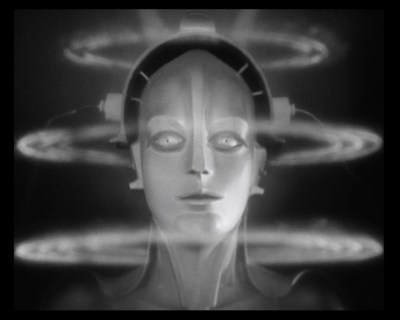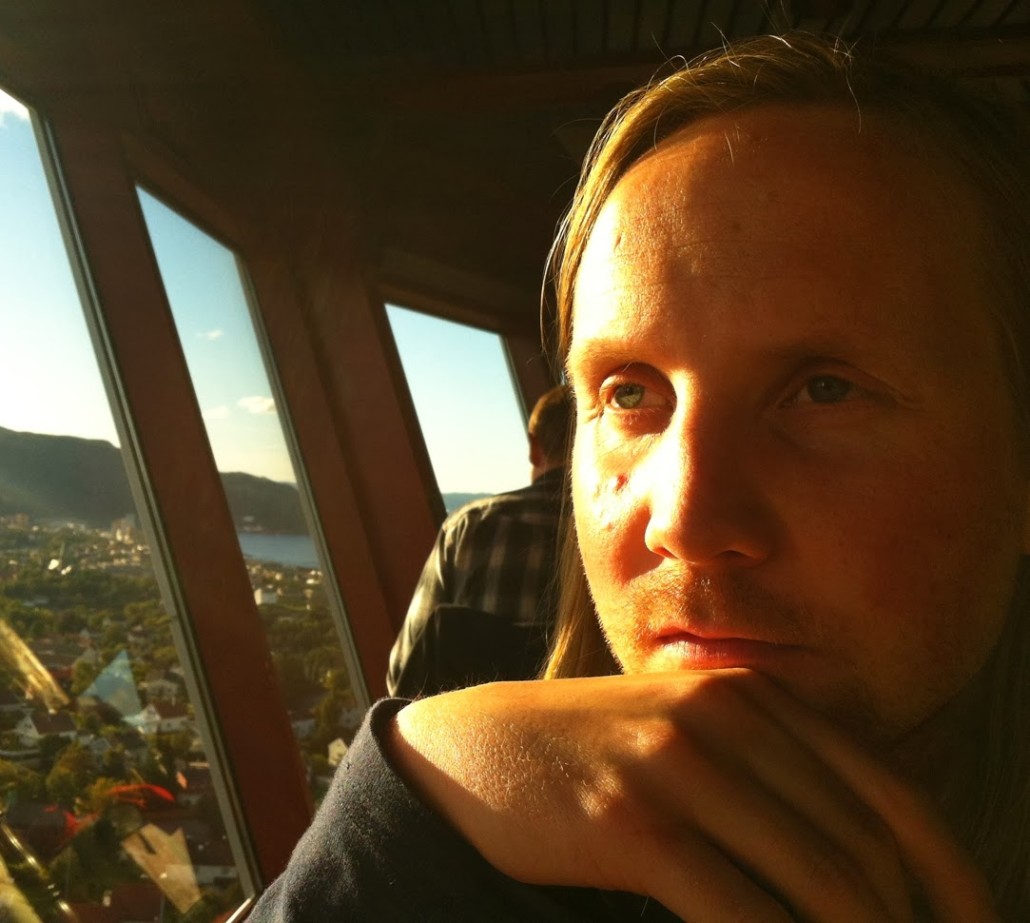Merlin Donald’s Big Thoughts on the evolution of culture offer opportunities to speculate about the place of religion in the natural history of our species – an opportunity most recently taken by Robert Bellah in his much discussed last book, Religion in Human Evolution: From the Paleolithic to the Axial Age (2011). But Donald’s work also affords opportunities for an even more speculative exercise: that of forecasting religion’s future. Instead of letting the many obvious obstacles of such forecasting hold us back, let’s indulge.
In Origins of the Modern Mind (1991), Donald suggested that human cultural evolution has gone through three main stages: mimetic culture (arising early in human evolutionary history), mythic culture (arising soon after the invention of language), and theoretic culture (taking shape only as late as the Enlightenment). These stages are explained fairly well in the interview, so I will not recapitulate here.
Donald’s thinking about cultural evolution is based to a considerable degree on his view on distributed cognition. Thinking does not all happen inside the cranium. It was not a sudden expansion of brain mass that inaugurated the era of cognitively and behaviourally modern humans, but rather drastic changes in the distributed cognitive networks that individual brains are part of: networks that engage many brains in coordinated ways to create “cognitive ecosystems”. Cultural evolution is based on changes in these distributed cognitive networks rather than sudden mutations in individual brains.
A growing school in cognitive science and the philosophy of mind is developing the idea of the extended mind, from Tyler Burge’s anti-individualism to Andy Clark’s supersized mind to Lambros Malafouris’ recent “Material Engagement Theory”. This school, to which we may count Donald as a moderate adherent, has serious implications for all disciplines studying human culture.
It also provides us with a useful clue for speculating about the future of religion. Donald holds that ritual behaviour emerges extremely early, and plays a significant role in “mimetic culture”. Religions of the doctrinaire type depend on more extensive language use, and emerge around powerful narratives and myths in the transition to “mythic culture”. Dependent primarily on mimetic imagination and narrative skills, then, we should not expect ritual and religion to disintegrate from the human cultural repertoire anytime soon.
Theoretic culture, on the other hand – ostensibly secular, reflective, scientific, and disenchanted – is a much more fragile thing. Its deepest roots lie in the “exographic revolution” (i.e. the invention of systems for externalizing memory), which started with simple carving and painting techniques in the upper Paleolithic and kicked off around 5,000 years ago with the invention of writing. It became possible to externalize thought and distribute abstract concepts to such an extent that difficult, reflective thinking could emerge.
But reflective thinking did not obsolete mythic culture – instead it was absorbed in it, subsumed by its governance structures and used to further them. It took other sorts of revolutions in the distributed cognitive network to pave the way for a theoretic culture to emerge: the printing press, the spread of literacy to wider populations, the creation of new institutions and rationalized bureaucracies. Even then, mythic culture was not supplanted by theoretic culture: the new nation states notably made use of all the strategies of mythic culture in creating grand narratives of the folk and their soil, united under one flag, one anthem, one canon of art and literature – and kept safe under the watchful eyes of one government. But these new “secular”-but-mythologized nation states also gave room for institutions where reflective knowledge was to be cultivated, and its fruits exploited in industry, business, and the ordering of society itself. We got education systems disciplining individual brains to do very difficult tasks such as reading, writing, and calculating things. We got the sort of distributed cognitive system that we are part of today.
The central message of this story, however, is not one of the unstoppable march of progress. Rather, it is that theoretic culture is extremely fragile, because entirely dependent on complex cognitive distribution networks spanning numerous interdependent institutions. As Robert McCauley concludes in Why Religion Is Natural and Science Is Not (2011), science is a socio-cognitive enterprise that can easily be crushed and disappear from a culture entirely with the collapse of a few central institutions. As Donald notes in the interview, there are reasons to doubt whether theoretic culture is sustainable on the longer run – let alone that it can ever be “purified” in the sense of ridding us of mythic and mimetic elements. Secularists and atheists may not have much reason to cheer the converging evidence from the cognitive science of religion (CSR). What Pascal Boyer (2001) called “the tragedy of the theologian” – that “theological correctness” is rarely followed in practice due to various constraints on online, unreflective cognition – is simultaneously the tragedy of the atheist demagogue. As (the later) Peter Berger put it: ‘The religious impulse … has been a perennial feature of humanity. … It would require something close to a mutation of the species to extinguish this impulse for good.’
We have to overcome humanity itself to overcome religion. So, to spice up our forecast, let’s look at some who would not shy away from doing exactly that: the transhumanists. What happens to religion if the future belongs to the cyborgs?
To begin with: transhumanists are divided on the question of religion/spirituality. A clear majority identifies as secular, and many of those are self-proclaimed atheists. Some, such as the Brighter Brains Institute think-tank, dabble in militant atheism (their term) together with neuroengineering, biohacking, and radical life extension. But there are also various strands of explicitly religious transhumanists, such as the Mormon Transhumanist Association. These Cyborgs for God see new technologies and radical modifications of human nature as ways of approaching salvation and becoming divine. Others, who would often self-describe as secular, still draw on religion-like narratives to talk about our imminent transhuman revolution through the “technological Singularity”. Some advocates, such as Ray Kurzweil, even see the singularity as a way to create God by rearranging all the matter in the universe and making it conscious.
That implementing new and even deeply transformative technologies would not necessarily stall the development of religious meaning-making but set it on a new course instead should not surprise us. Humans are after all natural born cyborgs, waking up to find new ways to improve the reach of our bodies and limits of our minds. The transhuman future (whichever one it is) may be more of a quantitative than a qualitative change. A technocentered spirituality of cyborgs that continue to utilize the deep proclivities from evolutionary history even in an age of exoskeletons, biohacks, and brain/computer interfaces is one possible transhuman future for religion. The form and function of this spirituality would depend entirely on the social form that this transhuman society would take – the governance structure of the by then extremely distributed cognitive network (think ubiquitous computing). If current trends of speculation among spiritual transhumanists are any indication, worship of the emerging Internet of Things as itself “conscious” and “divine” seems one path. But the actions of the class of experts who build, develop, and – most crucially – own the infrastructure of this network remains a decisive factor. Think of Google’s “Don’t Be Evil” turned into a first commandment, flashing on our retinas when we power up in the morning.
What about the intertwined future of irreligion? Another possibility is that a convergence of neuroengineering and artificial intelligence manages to rewire the brain in such a way that it meets Berger’s condition for the eradication of religion. In other words, not just a change in the distributed cognitive network, but a radical transformation of the biological component of that network – something that we haven’t seen in the previous cultural revolutions according to Donald.
To atheist transhumanists reading this: such rewiring may be one possible route to universal atheism, but you need to seriously consider whether it is a desirable one. In another recent book on religion and evolution, Big Gods (2013), Ara Norenzayan distinguishes between four roads to atheism. The first of these, “mind-blind atheism”, is the most fundamental. It addresses the neuroanatomical and computational level that could be altered by a radical transhuman approach bent on removing the basic cognitive mechanisms that create our susceptibility for what these engineers would consider “religion” (notions of gods, spirits, rituals and so forth). Since those basic mechanisms include such fundamental things as Theory of Mind and conceptual blending, however, rewiring us for atheism essentially means rewiring us for autism – and taking away our grasp of such things as metaphor while at it.
That’s probably a price too high for getting rid of a few god concepts. But the transhuman atheist need not necessarily despair. There are more feasible paths to near-global atheism. These would however rely, once more, on the structure of distributed cognitive networks rather than on essential changes to the brain. It will be important to establish certain types of institutions and forms of governance. Seeing that a large proportion of transhumanists appear to lean towards free-market libertarianism and anarcho-capitalism, the necessary steps of this model might in fact not be too appealing: It appears that to build well-functioning godless societies we must first become Scandinavian-style social democrats.
It is true that the sort of post-scarcity “abundance society” that some transhumanist authors imagine might correlate to some extent with the apathetic kind of atheism (“We’ve got all this cool stuff, so why bother?”). But the evidence suggests that it is the distribution of this wealth and power that will be the key factor. Social and economic equality, managed by a big welfare state that citizens trust, are the strongest correlates for irreligion. The futuristic medievalists of the “neoreactionary movement” that’s currently attracting some attention in transhumanist circles is certainly wide off the mark. They want to keep high-technology while essentially abandoning Merlin Donald’s theoretic culture all together for a return to old-school mythic culture – kings, knights, underlings and all. Sort of sounds like a bad idea. But good conditions for strange new religions to emerge.
The question of religion’s evolutionary future, then, has little to do with whether or not we become cyborgs. We already are cyborgs, and have been for tens of thousands of years. It has more to do with what kinds of cyborgs we become, and how we organize ourselves when we’re there.
References:
Bellah, Robert. 2011. Religion in Human Evolution: From the Paleolithic to the Axial Age. The Bellknap Press / Harvard University Press.
Boyer, Pascal. 2001. Religion Explained: The Evolutionary Origins of Religious Thought. New York, NY: Basic Books.
Burge, Tyler. 2010. Origins of Objectivity. Oxford and New York: Oxford University Press.
Clark, Andy. 2003. Natural Born Cyborgs: Minds, Technologies, and the Future of Human Intelligence. Oxford and New York: Oxford University Press.
Clark, Andy. 2010. Supersizing the Mind: Embodiment, Action, and Cognitive Extension. Oxford and New York: Oxford University Press.
Donald, Merlin. 1991. Origins of the Modern Mind. Cambridge: Harvard University Press.
Donald, Merlin. 2001. A Mind So Rare: The Evolution of Human Consciousness. New York: W.W. Norton.
Fauconnier, Gilles and Mark Turner. 2002. The Way We Think: Conceptual Blending and the Mind’s Hidden Complexities. New York, NY: Basic Books.
Malafouris, Lambros. 2013. How Things Shape the Mind: A Theory of Material Engagement. Cambridge: MIT Press.
McCauley, Robert. 2011. Why Religion Is Natural and Science Is Not. Oxford & New York: Oxford University Press.
Norenzayan, Ara. 2013. Big Gods: How Religion Transformed Cooperation and Conflict. Princeton: Princeton University Press.



